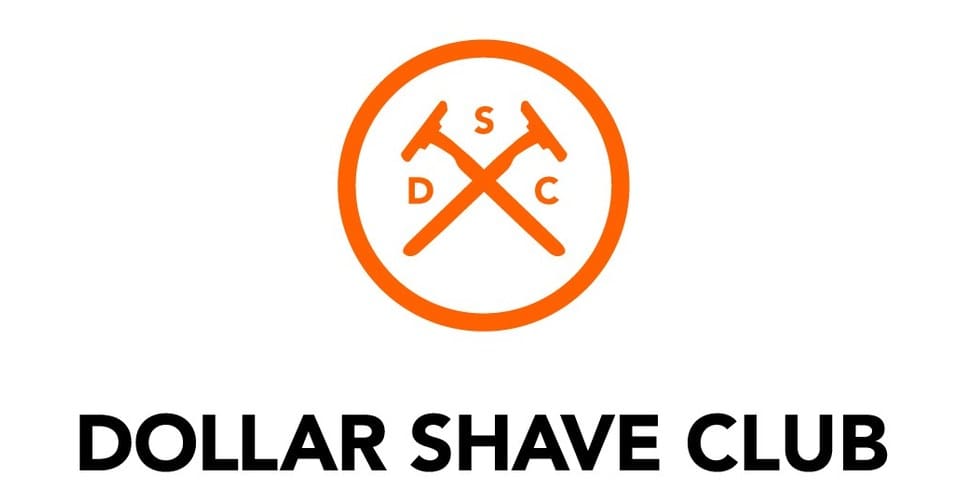Key highlights
- A recurring revenue model brings in steady income through subscriptions or repeats billing over time.
- It helps small businesses grow with predictable cash flow and higher customer retention.
- Common models include SaaS, subscription boxes, memberships and retainers.
- You can implement it easily with WordPress, WooCommerce and tools from Bluehost.
- Real-world brands succeed with this model by focusing on long-term value and customer loyalty.
Introduction
What if your business could earn revenue on repeat—without constantly hunting for new customers?
That’s the promise of the recurring revenue model—a system where income is steady, customers stay longer and growth becomes more predictable. Instead of constantly chasing new sales, your focus shifts to delivering ongoing value through a product or service that people are happy to pay for repeatedly.
This model isn’t new, but it’s more relevant than ever. From software platforms to subscription boxes and online memberships, businesses across industries are rethinking how they generate income—and many are turning to recurring revenue to build sustainability and scale.
In this guide, we’ll walk you through what is recurring revenue model, why it works and how you can adopt it to create long-term stability and deeper customer relationships.
Let’s get started.
What is recurring revenue model?
A recurring revenue model turns a single sale into a lasting relationship — where customers pay regularly and businesses enjoy consistent, predictable income.
A recurring revenue model is a business model where companies generate consistent income by offering subsscription-based products or services. Unlike the traditional one-time sales approach—where customers pay a lump sum upfront—recurring revenue businesses receive payments at regular intervals, such as monthly, quarterly or annually.
Depending on the pricing structure, the recurring fee can be fixed or vary based on usage. This setup creates predictable revenue and a steady cash flow, making it easier for businesses to plan growth, improve customer retention and reduce customer churn.
Whether you’re running a SaaS platform or membership-based brand, the recurring revenue model allows you to generate recurring sales, more frequent payments—without chasing new customers.
Why does recurring revenue matter for small businesses and entrepreneurs?
For small businesses and entrepreneurs, adopting a recurring revenue model can transform the way you generate income. Here’s why it matters:
- Predictable income: Unlike one-time sales, recurring revenue provides a steady, predictable stream of income. This helps you stabilize cash flow and plan for future growth with more confidence.
- Improved forecasting: When your revenue comes in regularly, it’s easier to forecast cash flow and manage business expenses. You can predict income, plan budgets and avoid financial stress.
- Higher customer lifetime value (CLV): With recurring payments, your customers commit to ongoing relationships with your business. This results in a higher customer lifetime value as they continue to pay overtime, driving long-term profitability.
- Easier scaling: Recurring revenue allows you to grow your business without constantly needing to acquire new customers. As your base of paying subscribers grows, your revenue expands without the same effort required for one-time sales.
If you are a small business owner looking to build a stable, recurring revenue model, a solid hosting platform is the first step to getting started. Bluehost offers you a single place for all your needs.
Whether you’re launching a membership site, offering a newsletter subscription or selling digital products, Bluehost’s hosting solutions make it easy to manage your subscription services. With tools like WooCommerce and membership plugins, you can build and scale your recurring revenue streams without hassle.
Types of recurring revenue models – Quick comparison
The beauty of a recurring revenue business model is that it can be adapted to various industries, making it flexible and scalable.
If you’re considering a recurring revenue business model for your business, there are several types to choose from. Here’s a quick comparison of the most common types of revenue models, along with their pros and cons, to help you decide what works best for you.
| Model | Description | Pros | Cons |
|---|---|---|---|
| Subscription Boxes | Regular delivery of curated products (example: Birchbox). | High customer retention, personalized service. | Complex logistics and inventory management. |
| SaaS | Subscription access to software (example: Microsoft 365, Zoom). | Predictable revenue, scalable. | High competition, potential customer churn. |
| Memberships | Ongoing access to exclusive content or services (example: Masterclass). | Strong loyalty, high engagement. | Requires consistent value delivery to retain members. |
| Retainer Services | Regular services for clients (example: marketing or consulting). | Stable income, long-term client relationships. | Service quality must be maintained to avoid churn. |
| Freemium Model | Basic service for free, with premium features for a fee (example: Spotify). | Large user base, upsell opportunities. | Hard to convert free users to paying customers. |
Each model offers unique advantages and the right choice depends on your business type and goals. For digital products, a subscription model or freemium model can help you generate predictable revenue, while physical products might benefit from a subscription box model.
How to implement a recurring revenue model using Bluehost?
Creating a recurring revenue business model can be a smart and scalable way to grow your brand. Now that you’ve understood what a recurring revenue model is and why it matters, it’s time to build it into your business.
Here’s how you can get started:
1. Identify your niche and audience
The first step is understanding the ongoing value you can provide. Are you delivering downloadable resources, running an online course, offering a digital service or launching a subscription business? Your model should solve a consistent need for your existing customers, encouraging them to pay a recurring fee for continued access.
2. Define your pricing structure
Pricing is a crucial factor for the success of a recurring revenue model. You should evaluate what’s the fair value of your products/services. If your price is too low, you might not get a return on your investment. Too high a price might turn the customers away.
Also, decide how your customers pay—monthly, quarterly or annually. Will you charge a fixed fee or use tiered billing based on usage? A smart pricing structure ensures steady monthly recurring revenue while remaining attractive to new users.
So, make sure you have a good idea of the pricing strategies.
3. Set up your website with Bluehost
Here’s where Bluehost comes in. It’s a reliable hosting platform that’s perfect for subscription-based businesses. Our eCommerce Premium solution is specifically designed with integrated WooCommerce and other powerful features to help you build and manage a revenue-based business model online.
With the supercharged solution, you can:
- Use WordPress + WooCommerce (automatically installed with Bluehost plans) to design your site with Bluehost WonderSuite – no coding needed.
- Choose from optimized themes for subscription services.
- Create essential pages like pricing, plans and customer dashboards.
- Integrate smooth payment gateways using PayPal and Stripe.
- Send automated onboarding emails, renewal reminders and promotions using Mailchimp.
- Keep your revenue engine safe with Jetpack security and Updraft.
This gives you a professional platform to showcase your products or services, build trust and manage subscriptions efficiently.
Add eCommerce and membership functionality
Within the solution, you also get access to WooCommerce to handle recurring payments, set monthly fees and configure tiered billing.
This allows you to:
- Use the YITH WooCommerce Membership plugin to restrict content, manage access and offer upgrades
- Set up automated billing for monthly recurring revenue or annual recurring revenue
- Offer trials or discounts to acquire new customers and reduce customer acquisition cost
Combined, these tools help you manage the entire customer journey—making it easy for paying customers to subscribe, stay and engage.
4. Integrate CRM and improve customer experience
Track customer behavior and personalize interactions with CRM integrations using plugins compatible with Bluehost. This helps:
- Strengthen customer loyalty through targeted messaging
- Reduce customer churn with proactive engagement
- Monitor key revenue metrics like average revenue per user and stable cash flow
By offering value consistently, you create a system that supports retaining customers, generating predictable income and growing your brand sustainably.
Also read: Top 11 Best WordPress CRM Plugins in 2025
Visual walkthrough: Building a recurring revenue business model with Bluehost
| Step | What you do | Tools you’ll use | Why it matters |
|---|---|---|---|
| 1. Set up your site | Choose a Bluehost plan and launch WordPress (pre-installed) | Bluehost integrated with WordPress | Gives you a flexible, easy-to-use base for your subscription business |
| 2. Design your site | Pick a subscription-friendly theme, create product or service pages | WordPress themes, page builders | Builds trust and helps clearly present recurring fee options |
| 3. Add subscription features | Enable recurring payments, set monthly or annual pricing, offer trials | WooCommerce + YITH Membership plugin | Turns your site into a revenue-generating machine |
| 4. Manage users and engagement | Track customers, reduce churn, improve satisfaction | CRM integrations, analytics tools | Boosts customer retention and lifetime value |
Real-life examples and use cases
Now that we’ve covered the basics of recurring revenue let’s take a look at some real-life examples of how businesses across various industries use this model to drive steady growth. These examples will help you see how you can apply the recurring revenue model to your own business.
1. SaaS platforms: Spotify

A leading music streaming platform, Spotify, offers millions of songs, podcasts and playlists. It lets users enjoy music on demand with personalized recommendations.
How it works:
- Users pay a monthly fee for ad-free music, playlists and exclusive features.
Why it works:
- Generates predictable monthly income
- Keeps customers engaged with regular, fresh content
- Reduces the need for constant new customer acquisition—existing customers keep paying
2. Subscription boxes: Dollar Shave Club

Dollar Shave Club revolutionized the shaving industry by offering a subscription service for razors and grooming products, delivered straight to your door.
How it works:
- Subscribers of Dollar Shave Club receive grooming products delivered monthly.
Why it works:
- Offers convenience—no need to re-buy; everything is automatic
- Builds loyalty with customers who value surprise and ease
- Delivers steady, recurring revenue with minimal marketing effort
3. Membership programs: MasterClass

MasterClass is an online learning platform offering courses taught by world-renowned experts, from cooking with Gordon Ramsay to acting with Natalie Portman.
How it works:
- Users subscribe annually for access to a library of expert-led courses at MasterClass.
Why it works:
- Ongoing value through fresh content
- Exclusive access to create a VIP experience
- Long-term engagement that builds loyalty
4. Online news & media: The New York Times

One of the most respected newspapers globally, The New York Times is known for its in-depth news, investigative reporting and unique analysis.
How it works:
- Subscribers pay for access to exclusive news, reports and articles.
Why it works:
- Regular updates keep customers engaged
- High-quality, credible journalism drives subscription value
- Predictable revenue stream independent of ads
5. Digital products: WPForms (WordPress plugins)

WPForms is a popular WordPress plugin that helps website owners create custom contact forms, surveys and payment forms, streamlining communication with site visitors.
How it works:
- Users purchase the WPForms plugin and then subscribe for ongoing updates and support.
Why it works:
- Keeps customers paying for regular updates and support.
- Builds long-term customer relationships with continuous value.
- Ensures steady income through subscriptions rather than one-time sales.
Why does recurring revenue work?
- Predictable income: Know what’s coming every month.
- Easier scaling: Expand your customer base without constantly chasing new sales.
- Customer loyalty: Ongoing value keeps customers coming back.
Ready to start your own recurring revenue model?
Bluehost can help! With our eCommerce Premium, integrated with WooCommerce Hosting, you have access to multiple tools and features to manage your subscription-based business.
What are the common pitfalls to avoid when using a recurring revenue business model?
When adopting a recurring revenue model, businesses often face challenges that can hinder growth and customer retention. Here are key pitfalls to watch out for:
- Poor onboarding: A confusing onboarding process can lead to early customer churn. Simplify the experience and set clear expectations to retain new subscribers.
- Unclear value proposition: If customers don’t immediately see the value in your service, they won’t stay. Be sure your value proposition is clear and compelling from the start.
- Ineffective churn management: Failing to track and address customer churn can lead to loss of recurring revenue. Use feedback, incentives and CRM tools to improve customer retention.
By being mindful of these pitfalls, you can keep your recurring revenue business thriving and ensure consistent cash flow.
Final thoughts
The recurring revenue model can transform your business by providing predictable income and long-term growth. By focusing on customer loyalty and managing churn, you can build a steady, scalable revenue stream.
Ready to get started? With Bluehost eCommerce Premium, you can seamlessly integrate a subscription model into your business. From memberships to digital products and services, Bluehost has the tools you need to grow your recurring revenue streams.
Start today! Build your recurring revenue business with Bluehost eCommerce Premium.
FAQs
It’s a model where customers pay regularly—monthly or annually—for ongoing access to a product or service, creating predictable and consistent income.
Key advantages include:
1. Predictable income: Steady cash flow aids in financial planning and stability.
2. Enhanced customer loyalty: Regular interactions foster stronger relationships.
3. Improved customer lifetime value: Ongoing services encourage longer customer engagement.
4. Scalability: Easier to grow revenue without proportionally increasing costs.
Yes, for many businesses. It offers steady cash flow, higher customer lifetime value and stronger customer relationships.
Use WooCommerce Subscriptions with Bluehost hosting. It’s easy to manage recurring payments, subscriptions and membership plans.



Write A Comment